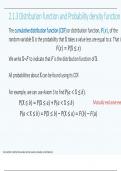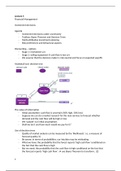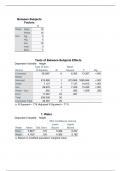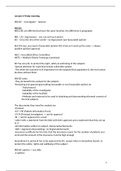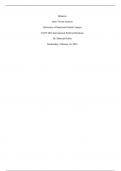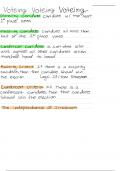AS Biology Specification Points
Cell Structure 2.1.1
(a) the use of microscopy
A microscope is an instrument which allows you to magnify an object many hundreds and thousands
of times.
Cell theory states that
ALL animal and plant tissue is made up of cells
cells are the basic unit of all life
cells ONLY DEVELOP from existing cells
Compound Light microscope
two lenses, objective and eyepiece lens
objective lens magnifies image which is magnified further by eyepiece lens
configuration allows for much higher magnification and reduces chromatic aberration
illumination provided by light underneath.
Electron microscopes
a beam of electrons with wavelength less than 1nm used to illuminate specimen
more detail can be seen because electrons have much shorter wavelength than light waves
magnifications of up to x 500,000.
However, expensive, carefully controlled environment with dedicated space, specimens can be
damaged by electron beam, problem with artefacts due to preparation.
Transmission electron microscope
beam of electrons transmitted THROUGH specimen and focused to produce image. Best resolution
power 0.5nm
denser part of the specimen absorbs more electrons which makes them look darker on the image
only used on thin specimens
Scanning electron microscope
a beam of electrons sent ACROSS surface and reflected electrons are collected in cathode ray tube
to form an image
show surface of the specimen but can be 3D
resolving power of 3-10nm
See Table 1, page 20,
Laser scanning confocal microscopy
use laser beams to scan a specimen tagged with fluorescent dye
laser causes dye to fluoresce
light is focused through a pinhole on to a detector, which is connected to computer, generating
image (3D sometimes)
Look at objects at different depths in thick specimens
used in diagnosis of diseases in eye, endoscopic procedures, used in the development of drugs as
see distribution of molecules within cells
(b) the preparation of slides in light microscopy
, Dry mount:
solid specimens viewed whole or cut in very thin slices, (called sectioning) so light can go through
specimen placed on centre of slide and cover slip placed over
Wet mount:
specimens suspended in liquid (e.g. water or immersion oil)
apply cover slip at an ANGLE so air bubbles are less
used to see aquatic samples
Squash slides:
a wet mount prepared
lens tissue is used to gently press down the cover slip
good for soft samples
Smear slides:
edge of slide is used to smear the sample creating thin even coating on slide
cover slip is placed over sample
Using an eyepiece graticule and stage micrometer
Eyepiece graticule is fitted onto the eye piece
Stage micrometer is placed on stage and it’s used to work out value of divisions on graticule at a
particular magnification
then work out length of specimen by replacing the stage micrometer with specimen
(c) the use of staining in light microscopy
Sometimes object being viewed is completely transparent. This makes specimen look white as light
rays just pass through
Crystal violet and methylene blue are positively charged dyes
these are attracted to negatively charged materials inside the cytoplasm leading to staining of cell
components
Dyes such as nigrosin or Congo red are negatively charged and are repelled by negatively charged
cytosol. These stay outside the cell leaving cells unstained which make them stand out
(d) the representation of cell structure seen under a light microscope using scientific annotated
drawings
Rules for scientific drawings:
- title
- state magnification
- sharp pencil
- white, unlined paper
- smooth, continuous lines
- no shading
- clearly defined structure
- correct proportions
- label lines should be parallel
Cell Structure 2.1.1
(a) the use of microscopy
A microscope is an instrument which allows you to magnify an object many hundreds and thousands
of times.
Cell theory states that
ALL animal and plant tissue is made up of cells
cells are the basic unit of all life
cells ONLY DEVELOP from existing cells
Compound Light microscope
two lenses, objective and eyepiece lens
objective lens magnifies image which is magnified further by eyepiece lens
configuration allows for much higher magnification and reduces chromatic aberration
illumination provided by light underneath.
Electron microscopes
a beam of electrons with wavelength less than 1nm used to illuminate specimen
more detail can be seen because electrons have much shorter wavelength than light waves
magnifications of up to x 500,000.
However, expensive, carefully controlled environment with dedicated space, specimens can be
damaged by electron beam, problem with artefacts due to preparation.
Transmission electron microscope
beam of electrons transmitted THROUGH specimen and focused to produce image. Best resolution
power 0.5nm
denser part of the specimen absorbs more electrons which makes them look darker on the image
only used on thin specimens
Scanning electron microscope
a beam of electrons sent ACROSS surface and reflected electrons are collected in cathode ray tube
to form an image
show surface of the specimen but can be 3D
resolving power of 3-10nm
See Table 1, page 20,
Laser scanning confocal microscopy
use laser beams to scan a specimen tagged with fluorescent dye
laser causes dye to fluoresce
light is focused through a pinhole on to a detector, which is connected to computer, generating
image (3D sometimes)
Look at objects at different depths in thick specimens
used in diagnosis of diseases in eye, endoscopic procedures, used in the development of drugs as
see distribution of molecules within cells
(b) the preparation of slides in light microscopy
, Dry mount:
solid specimens viewed whole or cut in very thin slices, (called sectioning) so light can go through
specimen placed on centre of slide and cover slip placed over
Wet mount:
specimens suspended in liquid (e.g. water or immersion oil)
apply cover slip at an ANGLE so air bubbles are less
used to see aquatic samples
Squash slides:
a wet mount prepared
lens tissue is used to gently press down the cover slip
good for soft samples
Smear slides:
edge of slide is used to smear the sample creating thin even coating on slide
cover slip is placed over sample
Using an eyepiece graticule and stage micrometer
Eyepiece graticule is fitted onto the eye piece
Stage micrometer is placed on stage and it’s used to work out value of divisions on graticule at a
particular magnification
then work out length of specimen by replacing the stage micrometer with specimen
(c) the use of staining in light microscopy
Sometimes object being viewed is completely transparent. This makes specimen look white as light
rays just pass through
Crystal violet and methylene blue are positively charged dyes
these are attracted to negatively charged materials inside the cytoplasm leading to staining of cell
components
Dyes such as nigrosin or Congo red are negatively charged and are repelled by negatively charged
cytosol. These stay outside the cell leaving cells unstained which make them stand out
(d) the representation of cell structure seen under a light microscope using scientific annotated
drawings
Rules for scientific drawings:
- title
- state magnification
- sharp pencil
- white, unlined paper
- smooth, continuous lines
- no shading
- clearly defined structure
- correct proportions
- label lines should be parallel


